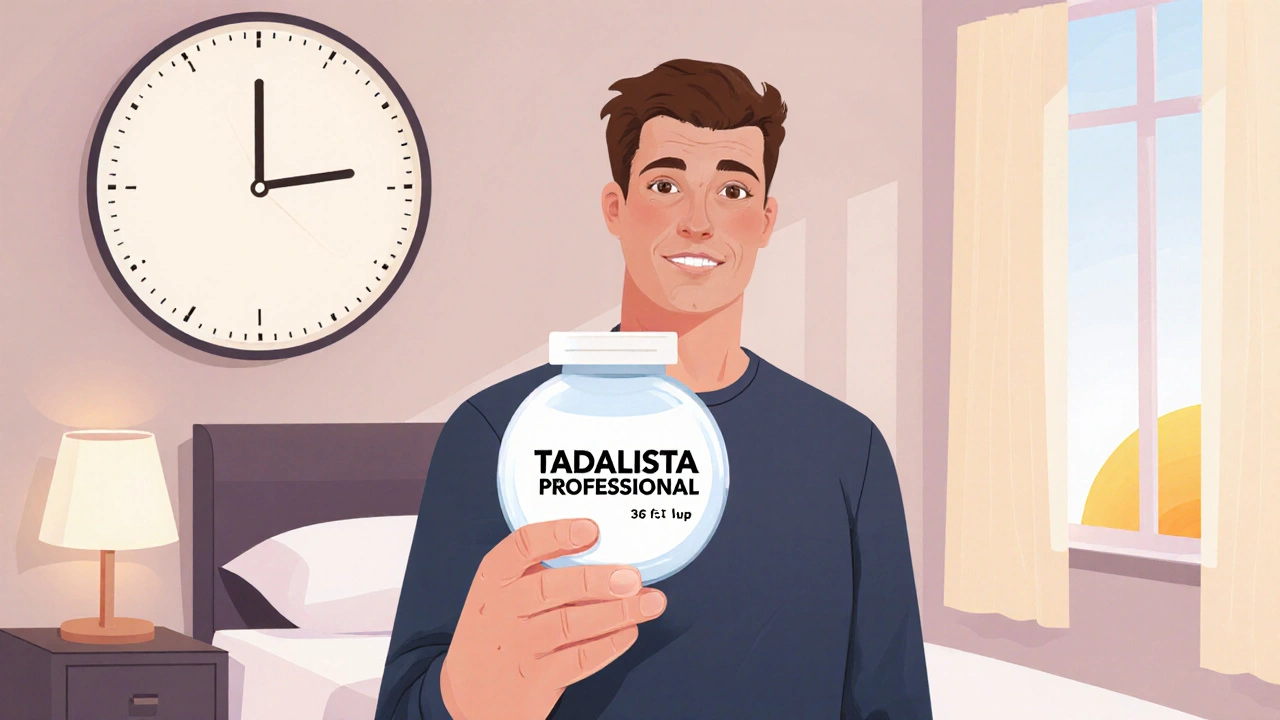Parkinson's Medication Selector
Personal Information
Current Symptoms
Recommended Medication
When managing Parkinson’s disease, Sinemet is a widely prescribed combination of carbidopa and levodopa. It works by boosting dopamine while preventing the breakdown of levodopa before it reaches the brain. If you or a loved one are exploring other options, you’ll want to know how the alternatives stack up on effectiveness, side‑effects, and when each is the right fit.
Key Points
- Sinemet pairs carbidopa with levodopa to improve motor control and reduce nausea.
- Alternatives include dopamine agonists, MAO‑B inhibitors, and combo therapies that add enzyme blockers.
- Choice depends on disease stage, side‑effect tolerance, and lifestyle factors.
- Switching meds should be done under a neurologist’s guidance to avoid withdrawal or overdose.
What Is Sinemet (Carbidopa/Levodopa)?
Sinemet combines two active ingredients: levodopa, a dopamine precursor, and carbidopa, which blocks peripheral conversion of levodopa to dopamine. This duo lets more levodopa cross the blood‑brain barrier, leading to smoother motor symptom control. Typical starting doses range from 25/100mg (carbidopa/levodopa) up to 100/400mg taken several times daily.
Common side‑effects include nausea, dizziness, and dyskinesia (involuntary movements) after long‑term use. Because it directly replenishes dopamine, Sinemet is usually the first line for patients with moderate to advanced disease.
Major Alternatives to Sinemet
Below are the most frequently considered alternatives, each with a distinct mechanism.
Ropinirole (Dopamine Agonist)
Ropinirole stimulates dopamine receptors directly, bypassing the need for levodopa conversion. It’s often used early in the disease or as an add‑on to reduce "off" periods. Typical dose: 0.25mg up to 24mg daily.
Pramipexole (Dopamine Agonist)
Pramipexole offers a longer half‑life than ropinirole, which can mean fewer doses. It’s effective for both motor symptoms and restless‑leg syndrome. Usual start: 0.125mg up to 4.5mg per day.
Rotigotine (Transdermal Patch)
Rotigotine delivers dopamine agonist therapy through a skin patch, providing steady plasma levels over 24hours. It’s handy for patients who have difficulty swallowing pills. Doses range from 2mg/24h to 16mg/24h.
Entacapone (COMT Inhibitor)
Entacapone blocks catechol‑O‑methyltransferase (COMT), an enzyme that breaks down levodopa in the bloodstream. It’s never used alone; it’s added to existing levodopa therapy to extend its effect and smooth out "off" periods. Typical dose: 200mg with each levodopa dose.
Safinamide (MAO‑B Inhibitor)
Safinamide inhibits monoamine oxidase‑B, reducing dopamine breakdown in the brain while also offering some glutamate modulating benefits. It’s approved as an add‑on for patients already on levodopa. Daily dose: 50mg or 100mg.
Selegiline (MAO‑B Inhibitor)
Selegiline is an older MAO‑B inhibitor often used early in the disease to delay the need for levodopa. It can be taken as a tablet or a transdermal patch. Starting dosage: 5mg daily, sometimes increased to 10mg.
Rasagiline (MAO‑B Inhibitor)
Rasagiline is a once‑daily MAO‑B inhibitor with a slightly more favorable side‑effect profile than selegiline. Common dose: 1mg daily.
Apomorphine (Injectable/Dopamine Agonist)
Apomorphine is used for sudden "off" episodes; it’s delivered via subcutaneous injection or pump. Because it can cause severe nausea, it’s reserved for breakthrough situations. Dosing is highly individualized.

Comparison Table
| Drug | Mechanism | Typical Dose | Key Side‑effects | Best For |
|---|---|---|---|---|
| Sinemet | Levodopa + Carbidopa (dopamine precursor + peripheral blocker) | 25/100mg to 100/400mg 3-4×/day | Nausea, dizziness, dyskinesia | Moderate‑to‑advanced Parkinson’s, when strong motor control needed |
| Ropinirole | Dopamine agonist (direct receptor stimulation) | 0.25mg → 24mg daily | Somnolence, impulse control issues | Early disease, patients who can’t tolerate levodopa nausea |
| Pramipexole | Dopamine agonist | 0.125mg → 4.5mg daily | Hallucinations, edema | Patients with restless legs or early‑stage disease |
| Rotigotine | Transdermal dopamine agonist | 2mg/24h → 16mg/24h | Skin irritation, insomnia | Patients with swallowing difficulties |
| Entacapone | COMT inhibitor (extends levodopa action) | 200mg with each levodopa dose | Yellow‑orange urine, diarrhea | Levodopa “wear‑off” problems |
| Safinamide | MAO‑B inhibitor + glutamate modulation | 50mg or 100mg daily | Hypertension, dizziness | Add‑on for patients already on levodopa |
| Selegiline | MAO‑B inhibitor | 5-10mg daily (or patch 5-10mg/24h) | Sleep attacks, orthostatic hypotension | Early disease, want to delay levodopa |
| Rasagiline | MAO‑B inhibitor | 1mg daily | Headache, joint pain | Early‑stage, once‑daily simplicity |
| Apomorphine | Injectable dopamine agonist | Individualized (often 2-5mg SC prn) | Severe nausea, injection site reactions | Rescue therapy for sudden "off" episodes |
How to Choose the Right Regimen
Picking a medication isn’t a one‑size‑fits‑all decision. Here are the key factors most clinicians weigh:
- Disease stage. Early stages often start with MAO‑B inhibitors or dopamine agonists to postpone levodopa‑related dyskinesia.
- Side‑effect profile. Patients prone to nausea may favor an agonist; those with impulse‑control issues need careful monitoring.
- Convenience. Daily pills, multiple doses, patches, or injections-all impact adherence.
- Cost and insurance coverage. Some agents are generic (levodopa/carbidopa), while newer MAO‑B inhibitors may be pricier.
- Comorbidities. Cognitive impairment, depression, or heart disease can steer the choice toward or away from certain drugs.
In practice, many neurologists start with a low dose of Sinemet and add a COMT inhibitor or MAO‑B inhibitor when "wear‑off" signs appear. If dyskinesia becomes problematic, a dopamine agonist may replace some levodopa doses.
Practical Tips for Switching or Adding Medications
- Never stop levodopa abruptly-withdrawal can cause severe rigidity.
- When adding Entacapone, keep the levodopa dose the same; you’ll usually see longer “on” periods.
- Start dopamine agonists at the lowest possible dose and titrate slowly to avoid sudden drops in blood pressure.
- Monitor blood pressure and mood closely after initiating MAO‑B inhibitors; avoid foods high in tyramine while on non‑selective MAO inhibitors.
- Keep a symptom diary - note timing of "off" episodes, side‑effects, and any changes after a medication tweak. This data guides the next adjustment.
Frequently Asked Questions
Can I take Sinemet and a dopamine agonist together?
Yes, many patients combine them to smooth out "off" periods while keeping the total levodopa dose lower. The doctor will adjust each drug to avoid excess dopamine, which can cause hallucinations or dyskinesia.
Why does Sinemet cause nausea?
Levodopa is converted to dopamine in the gut, triggering nausea. Carbidopa blocks this peripheral conversion, but at low doses some nausea can still slip through. Taking the medication with food often helps.
Is a patch (Rotigotine) better than pills?
Patches provide steady drug levels and are ideal for people who have swallowing difficulties or experience peaks and troughs with pills. However, skin irritation is a common complaint, so a trial period is usually recommended.
When should I consider switching from Sinemet to an MAO‑B inhibitor?
If you’re early in the disease and want to delay levodopa‑related dyskinesia, an MAO‑B inhibitor like rasagiline or safinamide can be started before levodopa is needed. Once motor fluctuations appear, adding a COMT inhibitor or adjusting the levodopa dose becomes more common.
Are there dietary restrictions with these medications?
Only non‑selective MAO inhibitors require a low‑tyramine diet (avoid aged cheeses, cured meats, certain wines). Selective MAO‑B inhibitors (rasagiline, selegiline at low doses) have minimal restrictions. Carbidopa/levodopa has no major food interactions, but high‑protein meals can compete with levodopa absorption, so many patients spread protein intake throughout the day.
Choosing the right Parkinson’s medication is a balance of symptom control, side‑effect tolerance, and daily routine. By understanding how Sinemet compares to its peers, you can have a more informed conversation with your neurologist and find a plan that keeps you moving forward.



When you first look at the Sinemet vs other Parkinson’s drugs table, it can feel overwhelming, but let me walk you through it step by step.
First, understand that Sinemet is a combination of levodopa and carbidopa, which together boost dopamine and prevent early breakdown, giving you smoother motor control.
That’s why many neurologists start patients on a low dose and gradually increase it as the disease progresses.
In comparison, dopamine agonists like ropinirole and pramipexole act directly on dopamine receptors, so they can be used earlier to delay the need for levodopa.
However, they come with their own side‑effects, such as somnolence and impulse‑control issues, which can be challenging for some patients.
MAO‑B inhibitors such as selegiline or rasagiline work by preventing dopamine breakdown in the brain and are excellent for early‑stage patients who want to postpone levodopa therapy.
These drugs are generally well‑tolerated, but you must watch out for dietary tyramine interactions with non‑selective MAO inhibitors.
COMT inhibitors like entacapone are not used alone; they are added to levodopa regimens to extend the “on” time and smooth out wear‑off periods.
When you add entacapone, you’ll notice a longer duration of effect without needing to increase the levodopa dose, which can reduce dyskinesia risk.
Safinamide is a newer MAO‑B inhibitor that also modulates glutamate, offering an extra benefit for motor fluctuations while still being an add‑on to levodopa therapy.
If a patient experiences sudden “off” episodes, apomorphine injections can be a rescue option, delivering rapid relief, though nausea can be severe and requires careful monitoring.
Transdermal options like the rotigotine patch provide steady dopamine agonist delivery for those with swallowing difficulties, but skin irritation is a common complaint.
Remember that cost and insurance coverage play a huge role; generic carbidopa/levodopa is usually affordable, while newer agents may be pricier.
Ultimately, the best regimen is personalized: start low, monitor side‑effects, adjust doses, and consider add‑ons when wear‑off occurs.
Keep a symptom diary, discuss changes with your neurologist, and don’t be afraid to ask about switching or combining therapies as your disease evolves.
From a pharmacological standpoint, the titration schedule for Sinemet typically begins at 25/100 mg three times daily, with increments of 25 mg every week until therapeutic benefit is observed. Dosing must consider dietary protein, as high‑protein meals can compete with levodopa for intestinal absorption. When adding a COMT inhibitor such as entacapone, the levodopa dose remains unchanged; the 200 mg entacapone is taken with each levodopa dose, extending the plasma half‑life by approximately 30‑40 minutes. For MAO‑B inhibitors, the recommended rasagiline dose is 1 mg once daily, while selegiline may require titration from 5 mg to 10 mg. It is essential to avoid non‑selective MAO inhibitors due to tyramine interaction risk. In clinical practice, dose adjustments are guided by patient‑reported "on" and "off" periods, with a target of minimizing dyskinesia while maintaining functional mobility.
I find it helpful to think of the medication choices as a toolbox. If you’re early in the disease, a low‑dose MAO‑B inhibitor can delay the need for levodopa, keeping you on a simpler regimen. When motor fluctuations start to appear, adding a COMT inhibitor or switching to a dopamine agonist can smooth out those "off" periods. The key is to balance efficacy with tolerability-some patients are more sensitive to nausea, while others may struggle with impulse‑control issues from agonists. Regular check‑ins with your neurologist and a symptom diary make navigating these decisions much easier.
While the detailed titration is useful, most patients just want a quick fix; adding more pills often complicates adherence.
All this talk is overkill 😂
Totally get that you feel it’s a lot-sometimes simplifying to "take what works and drop the rest" is the best approach.
Wow! This guide really shines a light on how diverse the options are!!! From classic Sinemet to the slick rotigotine patch, there’s a world of choices!!! Remember to check your insurance-some newer meds can be pricey!!! And don’t forget the power of a good symptom diary; writing down "on" and "off" times can be a game‑changer!!! Talk to your neurologist about any side‑effects-nausea, dizziness, or even skin irritation from patches! With careful monitoring, you can fine‑tune the perfect combo!!!
good points but also watch for urine color change with entacapone
Hey folks, keep your heads up! Even if the med maze looks confusing, you’ve got the power to find the right combo. Start small, track progress, and celebrate every little win. You’re not alone in this – the community’s got your back!
Honestly, the whole comparison feels like pharma‑driven jargon. Most patients just need something that works, not a PhD in pharmacokinetics.
While the jargon can be dense, it’s important for clinicians to have that detail when tailoring therapy. Using terms like "COMT inhibition" helps us understand why a particular add‑on might extend "on" time, which can be crucial for patient quality of life.
In the grand theatre of neuro‑pharmacology, each drug is a character-Sinemet the protagonist, dopamine agonists the supporting cast, and MAO‑B inhibitors the subtle understudies that whisper change behind the scenes. Yet, without a script (a clear treatment plan), the performance can turn into chaos. The real art lies in directing these actors to harmonize, not clash.
Great insights! If you’re feeling unsure, setting a weekly check‑in with your doctor can help you tweak the regimen before side‑effects become a big issue.